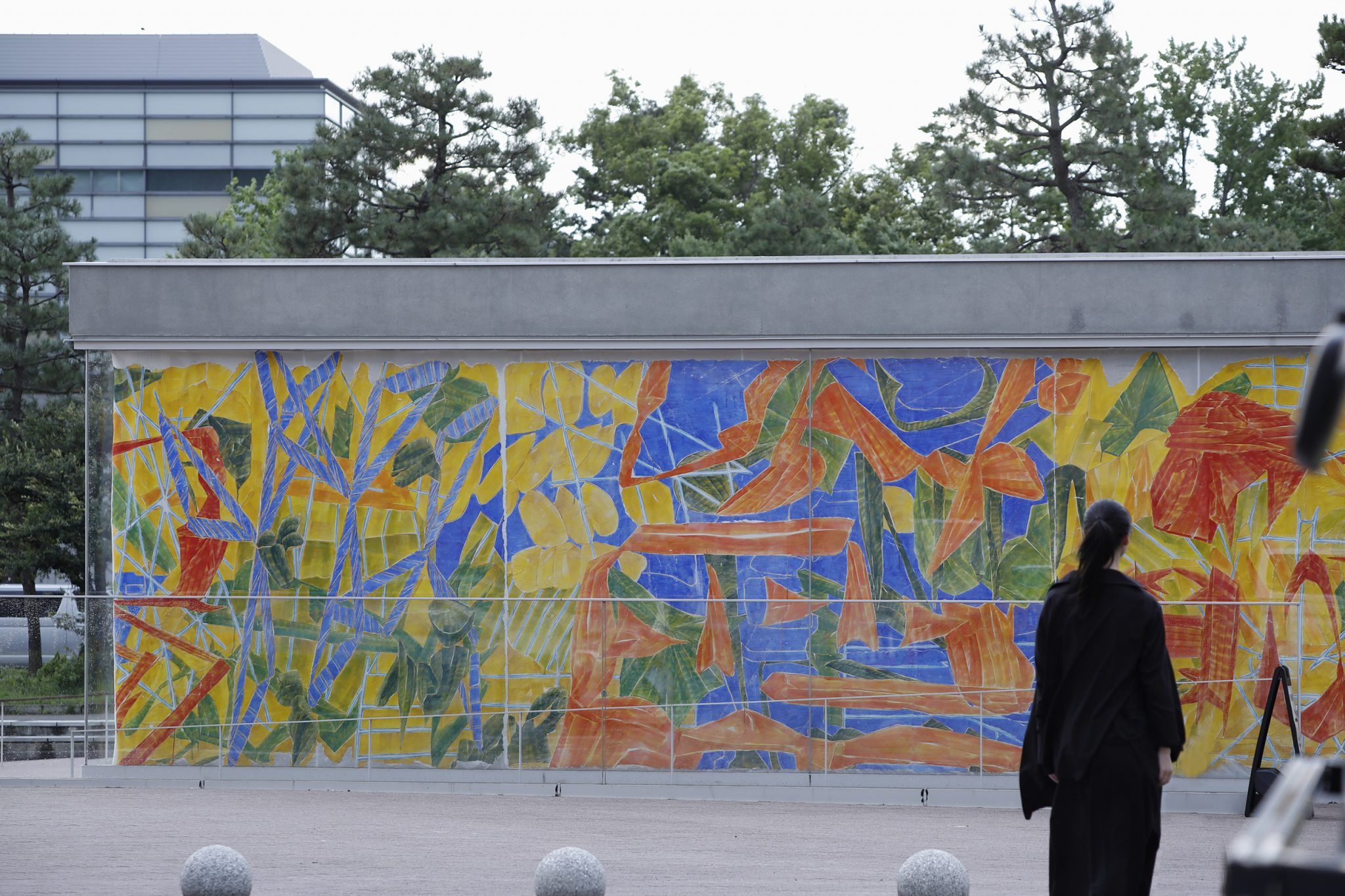Kawata’s frescoes explore the outer reaches of urban life, their mysterious agency and ability to colonise
Travellers to Japan are inevitably drawn to the country’s vast metropolitan cities and famed natural attractions, such as its mountains and hot springs; few would think to spend time in the suburbs. From my perspective as a road tripper who likes overnighting in these towns, the experience, one to the next, is almost identical: such areas are dominated by an arterial road lined by signboards for franchises such as McDonald’s and 7-Eleven and local restaurant chains like Gusto, then further out from this thoroughfare can be found quiet residential zones filled with small grey houses and narrow streets. Having become acquainted with this landscape over some time, I was surprised by Satoshi Kawata’s interpretation of Japan’s suburbs in his exhibition at The Triangle, a space that was added to the Kyoto City Kyocera Museum of Art two years ago to showcase emerging artists. Born in Osaka and now based in Kyōtango, Kawata specialises in frescoes and has covered the walls of The Triangle with an abstract painting that, through scale alone, creates an immersive environment of overlapping green and yellow jagged spikes that jab and poke in all directions – a visual that is far from the bland and homogenous topographies that are nicknamed ‘fast-scenery’ by Japanese netizens.
Kawata’s forms bring to mind various associations: crystalline shards, proliferating plant growth and soil, and pylons. Overall, the work infuses the gallery with the frenetic energy of a landscape in flux. The wall text explains that Kawata was inspired by the ‘civil engineering technology that shapes the suburban landscape’ – an ongoing preoccupation of his recent works – and mentions artificially sloped terrains and large transmission towers among his visual references; all of which can be glimpsed in the diagonals and sharp angles of Techne for the Public, while fine blue grids in the background suggest electrical circuitry. More salient though than the urban-planning references is the colossal sense of movement, force and vitality. His vision of the suburbs is a shifting, fractured, tectonic reality where land masses slide and overlap, towers grow and break, and plant life runs rife. If suburbs are indeed replicating themselves across Japan, Kawata’s work suggests that this could be due to their own mysterious agency and ability to colonise.

That the artist has evolved his practice by focusing on mural painting is notable in itself. Often installed in public spaces, frescoes can be considered a civic artform, which invests Kawata’s work with a certain generosity; an egalitarian quality (he has painted within public baths and schools) that stands in refreshing contrast to the stately presentation of national treasures housed in the main building of the Kyocera complex. As well as this, Kawata’s paintings are a fascinating ‘street’ interpretation of a tradition that is thousands of years old. A highly technical process, frescoes are made by applying plaster on the wall and painting before the material sets. This is usually a very controlled methodology, where the artist works in stages; Kawata has a freer process. He applies plaster in irregularly shaped patches before painting on them. When one patch dries, he might plaster on another patch that overlaps slightly with the previous one. Looking at the work up-close reveals a wealth of details: the textured surfaces of plaster, still bearing the traces of how it was slapped onto the wall and spread around, alongside the chalky, matte shades of the vibrant pigment that is somewhere between watercolour and pastel. In his hands, frescoes are an active, fluid and expressive artform.
Kawata’s frescoes don’t have to stay put, and part of the exhibition shows you how he intends to move them around. In the basement of The Triangle, which has cement walls, paintings were made using the traditional plaster-and-pigment technique. But on the ground floor of the building, which has three glass sides, the artist has hung canvases onto which frescoes have been imprinted. These imprints were made using the ‘strappo’ technique by which canvases are pressed onto the painted fresco and then stripped off, resulting in a negative print of the fresco. It is a method typically used to conserve ageing frescoes on crumbling, unsalvageable buildings. At the end of the exhibition, Kawata plans to use this technique to detach the frescoes in the basement and transport them elsewhere, giving them the opportunity of a new life. You could connect this process back to the subject matter – these so-called manufactured suburbs are copied and pasted from place to place by urban planners. But the process also reveals Kawata’s take on the artform, which values flexibility over fixity. His frescoes are not only hard, permanent objects but also soft, detachable skins.
Techne for the Public at Kyoto City Kyocera Museum of Art, 16 July – 6 October
From the Winter 2024 issue of ArtReview Asia – get your copy.
